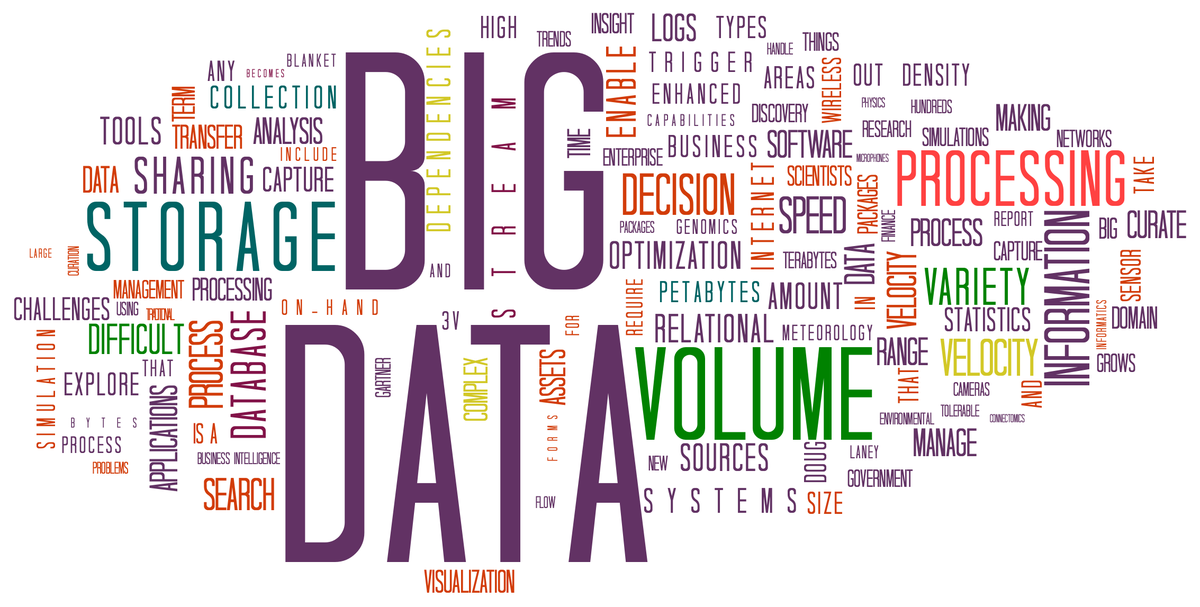Let’s begin with the basics. Data becomes truly Big Data when it is characterized by the three big Vs. These are — volume, variety, and velocity. Every day, petabytes of data are produced across the digital world. The variety of data sources is mind-numbing, particularly for a modern enterprise. Also, the pace of information expansion (it’s more of an explosion) is dizzying for data experts. As we move deeper into 2018, more and more businesses are experiencing that their data satisfies the three Vs, and is hence, Big Data by all means. To draw insights out of this massive data, to detect anomalies, and to prepare useful templates of analytic steps, businesses need Big Data analytics capabilities. If you find your enterprise at the crossroads in its Big Data and analytics journey, there are certain trends that you need to know to decide your future course. Here’s a quick look at the most important of these Big Data analytics trends.
Cloud-based storage and computation
Perhaps the most important of all the Big Data analytics trends is how costs are coming down as competition heats up. Because cloud computing IaaS and DaaS wars are nowhere near a truce, consumers stand to benefit the most. More players are entering the cloud-storage battlefield and offering more storage and computing solutions. Enterprises don’t even need to consider the need to invest in a datacenter.

With affordable cloud storage and computing solutions on offer, renting is infinitely better than buying or building. Google, Amazon, and Microsoft are the big shots, and there are numerous new entrants offering niche solutions to entice consumers from specific industries.
So, you don’t have much of a place in terms of managing the “volume” component of your Big Data, because of affordable cloud-based storage. Also, Amazon and Google help enterprises build up their cloud computing infrastructure (for instance, via Google Cloud and Google APIs), enabling management of the “velocity” component of Big Data.
Neural networks
If you’ve been following the hot Big Data analytics trends recently, the words “neural network” and “machine learning” might not sound alien to you. Armed with several machine learning and deep learning algorithmic capabilities, neural networks are the vehicle on which the next phase of Big Data analytics’ growth depends. From detecting tumors inside the human body to finding celestial bodies henceforth unknown to astronomers — neural networks are doing what seemed super-human or impossible not many years back.
The best part — these networks can analyze flowing data, identify patterns, and report anomalies — all this and more, based on preconfigured parameters. Not only does this make neural networks powerful drivers of analytics automation, but also underscores their value in analyzing unstructured data.
GUIs — Making analytics engines accessible
The absence of intuitive and understandable GUIs has been one of the major stumbling blocks for Big Data analytics in the past few years. Thankfully, the “representational”’ issues are being solved now, as tools like R language and Jupyter Notebook (that’s a combination of Julia, Python, and R) make rapid progress.
The advantage with R scripts, for instance, is that they can be rerun with ease, which also makes them reliable tools and universally applicable. Explanatory texts, equations, data visualizations, and live code — all these components form Big Data analytics trends adding more value than ever
Unstructured data analytics
Let’s address a trend around the “variety” component of Big Data analytics now. Data visualization and machine learning algorithms are constantly improving. These are, hence, making newer kinds of data available for analytics. Among the most recent examples are video view stats and social media interactions. Because of the way users engage with these platforms, the data carries immense weight and worth. As a result, enterprises are able to personalize offers, show supremely relevant advertisements to end users, and drive conversions.
Metadata catalogs

For many years, enterprises had to do away with a lot of data because it was too much for their systems to process. A lot of times, data is saved, but in a way that makes it next to impossible to find it quickly when the need comes. Metadata catalogs solve both these problems because they help enterprises find analysis worthy data.
These systems work by cataloging files using tags, finding out and documenting relationships between data components, and providing query suggestions through searchable UIs. This means that end users will be able to trust and query data quicker and get results quicker. Awareness and demand for metadata cataloging systems is expected to rise very soon.
Mobile dashboards
A reality of the modern enterprise is that most of its Big Data analytics insight is accessible from a desk computer, whereas managers who need the information are not always close enough to these machines. Particularly in low latency applications of Big Data analytics, there’s need to bridge this gap.
Mobile dashboards are a massive leap in this direction. This is being done via add-on apps of existing Big Data analytics systems. These apps can query the same databases as used by the core analytics engine, crunch numbers, and deliver segmented information streams via notifications.
Evolving security and governance capabilities
Customers are beginning to expect enterprise-grade RDBMS platforms to possess security and governance components. Role-based authorizations of data and metadata access, application of data classifications across the data landscape, and centralized security administration for data repositories — these are the three key components of RDBMS secure and governance. Big Data technology giants already recognize this, and, as a result, these capabilities are making their way into existing systems.
Big Data analytics trends: It’s all about right choices
Big Data analytics is the vehicle that makes your enterprise cover the journey from data to discovery. If you’re already invested in Big Data analytics or are on the verge of making your first move (finally), this guide will help you out. Stay abreast of movements of the Big Data analytics trends we discussed, and you’ll find yourself equipped with the vision to take the right decisions.
Photo credit: Shutterstock



